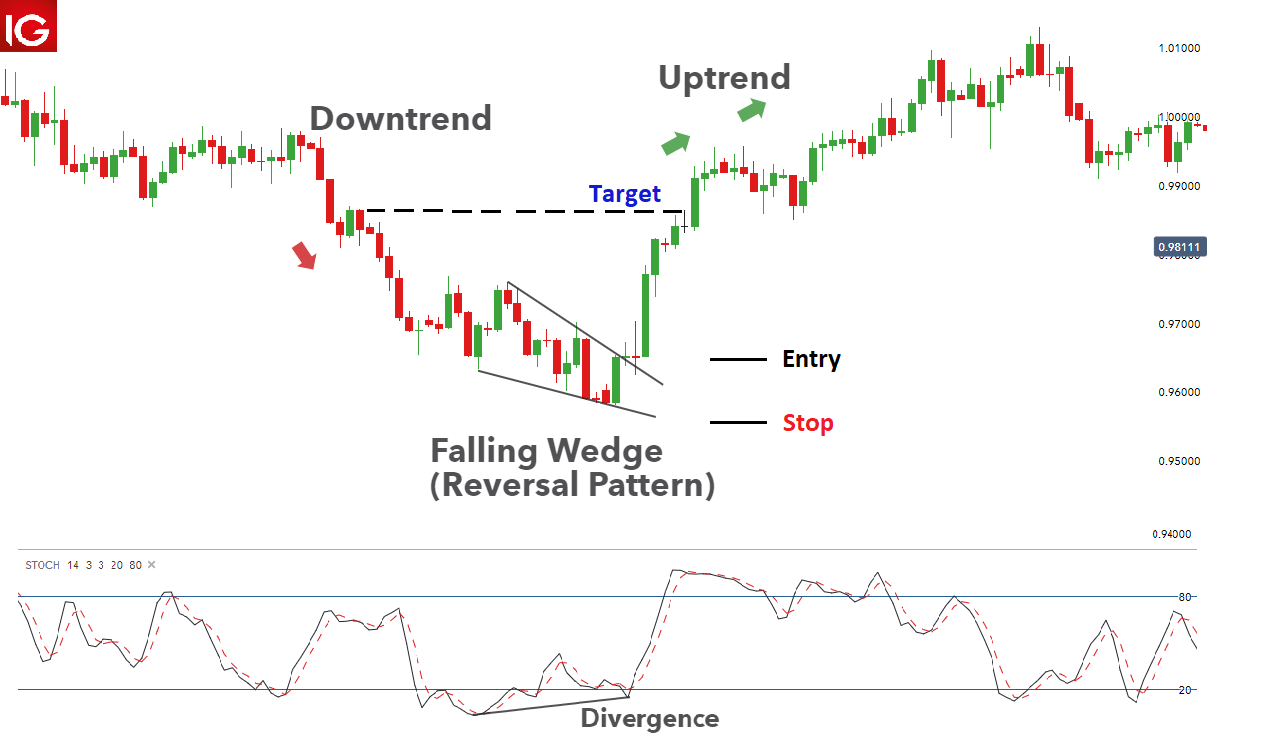
Any close within the territory of a wedge invalidates the pattern. In this case we will go for the option number one.Ī stop-loss order should be placed within the wedge, near the upper line. On the other hand, the second option gives you an entry at a better price. The first option is more safe as you have no guarantees whether the pull back will occur at all.

Once we spot a falling wedge that fulfills all criteria, we start focusing on the main elements of a trade: entry, stop loss and take profit, as well as the overall risk associated with this trading opportunity. Let us now look at the same example from a more technical trading perspective. The surge in volume comes around at the same time as the break out occurs. Just before the break out occurs and as the two trend lines get close to each other, the buyers force a break out of the wedge, surging higher to create a new low. In parallel, you see that the volume decreases. The pair’s price then starts to move lower, i.e.: the consolidation phase starts as the buyers use this time to regroup and prepare for another press higher. The price action moves in an uptrend, pushing higher and creating new short-term lows. In the chart above we see a EUR/USD on a daily chart. For this reason, we have two trend lines that are not running in parallel.
#FALLING WEDGE PATTERN SERIES#
In a channel, the price action creates a series of the lower highs and lower lows while in the descending wedge we have the lower highs as well but the lows are printed at higher prices. It’s important to note a difference between a descending channel and falling wedge. The second phase is when the consolidation phase starts, which takes the price action lower. The price action trades higher, however the buyers lose the momentum at one point and the bears take temporary control over the price action.


The most common falling wedge formation occurs in a clean uptrend. For this reason, you might want to consider using the latest MetaTrader 5 trading platform, which you can access here. It may take you some time to identify a falling wedge that fulfills all three elements. The first two elements are mandatory features of falling wedge, while the occurrence of the decreasing volume is very helpful as it adds additional legitimacy and validity to the pattern.

One of the key features of the falling wedge pattern is the volume, which decreases as the channel converges. The consolidation part ends when the price action bursts through the upper trend line, or wedge’s resistance. Within this pull back, two converging trend lines are drawn. The falling wedge pattern occurs when the asset’s price is moving in an overall bullish trend before the price action corrects lower.


 0 kommentar(er)
0 kommentar(er)
